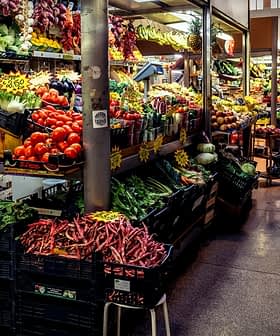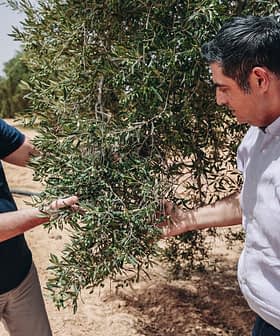Worldwide olive oil production will be somewhat lower than consumption in the 2020 season.
With current estimates suggesting production of around 3.11 million tons of olive oil and 3.14 million tons expected to be consumed, there could finally be some good news for producers, according to the international consultant Juan Vilar.
It is a ball of oxygen for the traditional olive grove, which accounts for 70 percent of the harvest and that, without a doubt, has lived through some difficult times.
“We expect that during this campaign, consumption will be higher than production,” Vilar said at a recent Andalusian webinar about olive production, according to the Spanish news agency COPE.
See Also:Prices Open Higher in Greece Amid Shortage of Laborers“In addition, price increases have been seen in all categories and this shows that although a change in strategy is necessary, it is a ball of oxygen for the traditional olive grove, which accounts for 70 percent of the harvest and that, without a doubt, has lived through some difficult times.”
There is also a growing role around the world for the “modern olive grove,” said Vilar, which now accounts for “40 percent of all olive oil produced” — numbers that reveal “a trending change and a reality which is constantly growing.”
Vilar also noted how the growing popularity of olive farming in five continents “brought to a total of 11.5 million hectares dedicated to olive trees.” Those numbers pushed worldwide production to exceed 3 million tons “feeding households in more than 180 countries.”
The worldwide production for the current season will be 3.4 percent lower than last year, a drop mostly due to the reduced yield in several Mediterranean countries including Italy (270,000 tons), Greece (240,000), Morocco (140,000), Tunisia (130,000) and Portugal (120,000).
The only exception to the downward trend is Spain, where production is set to reach 1.6 to 1.7 million tons, as reported by the local magazine Agrònoma.
According to Vilar, the decline in production in some Mediterranean countries is due to the typical alternating seasons.
“Most olive orchards in these countries are traditional groves, as it happens in Italy, Greece or Tunisia,” said Vilar, “countries that last year recorded a quite relevant yield. It happened in Tunisia, which witnessed a falling prices trend in the previous season, as well as in Portugal, whose yield reached a peak of 150 thousand tons.”
Spain has been able to strengthen its position as the main producer, which Vilar mostly attributed to strong investments in modern farming and specific new technologies.
“Spain,” noted Vilar, “has been able to adequately combine its traditional knowledge of the crop with new technologies, becoming the world’s largest producer of olive oils, since more than half — 52 percent — of the oils produced in the five continents will be of Spanish origin.”
The consultant also underlined how olive oil prices, which in recent years have been steadily declining, seem now close to a trend change.
A shortage of extra virgin olive oil has brought an increase in prices, with new contracts closing over €3 ($3.54) per kilogram.
“These days we are seeing prices for EVOO in Portugal reaching €3.20 per kilogram because there the first EVOOs of the season are produced,” Vilar noted, “while in the coming weeks’ prices will gradually slow, positioning prices for the Spanish season around €2.40 or €2.50. Even if we can expect a small drop afterward, prices should stay at €2.25 or €2.35 until the end of January.”
It would be a relief for producers, given that prices in Jaén, the main Andalusian market, dropped in September to €2 per kilogram, according to the latest figures from the International Olive Council (IOC).








